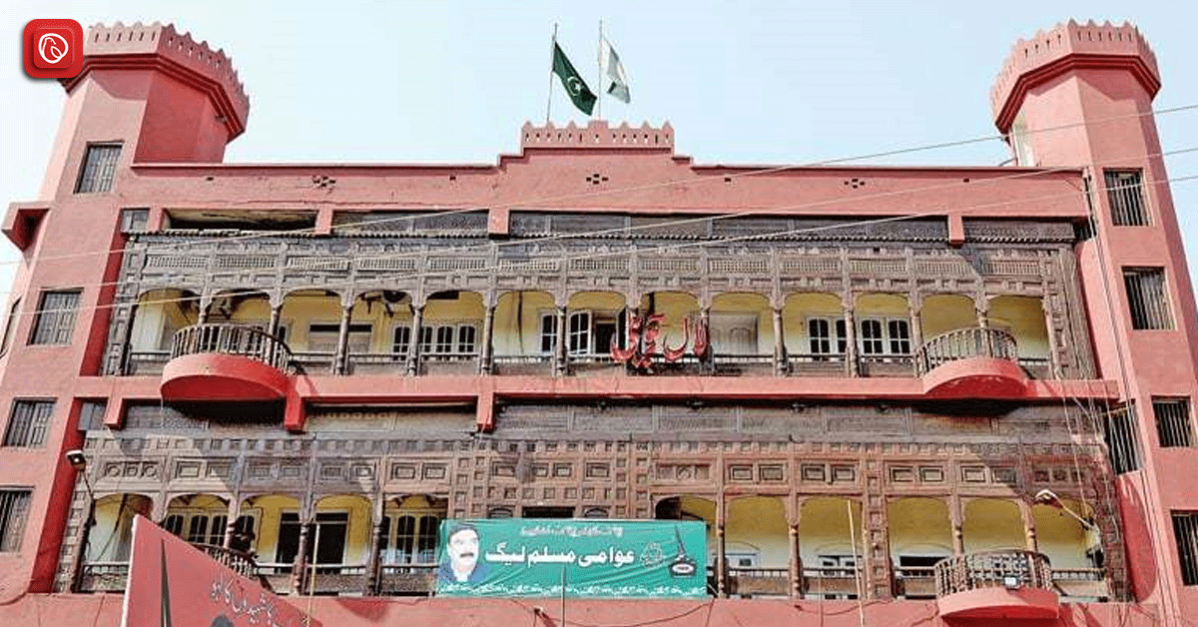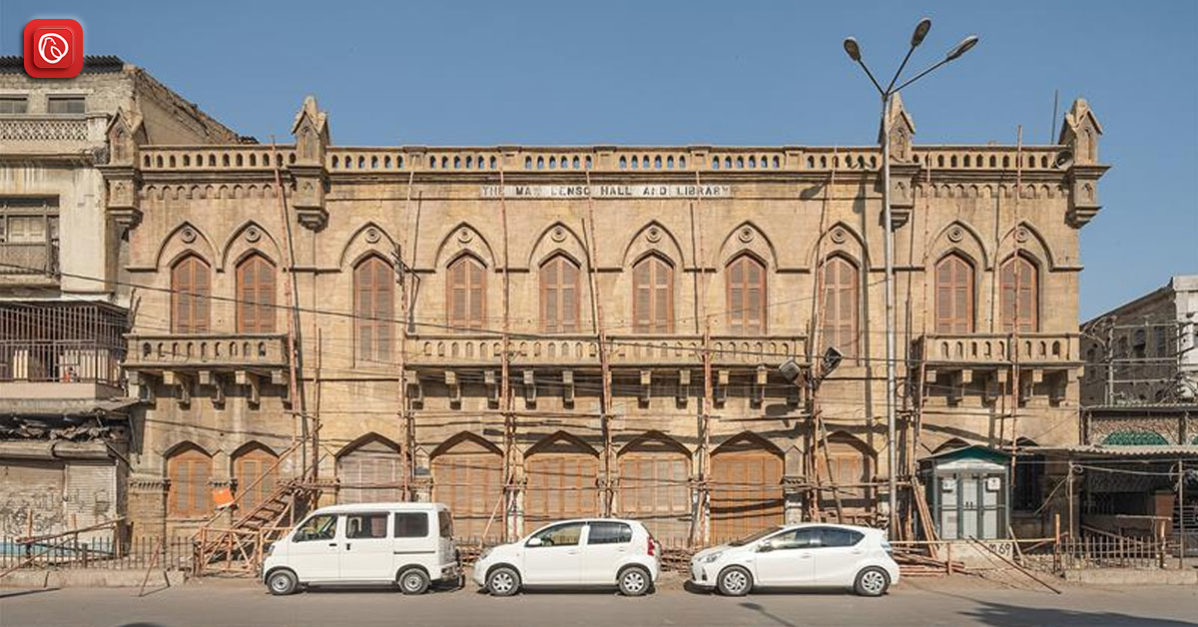Lal Haveli, a century-old architectural landmark in Rawalpindi, bears witness to a multifaceted history encompassing love, religious diversity, and contemporary political influence. Constructed by Dhan Raj Sehgal for Budhan Bai, Lal Haveli’s roots lie in an unconventional love story that defied societal norms. The intricacies of this narrative extend beyond romance. It embodies principles of religious coexistence, reflected in the construction of a mosque for Bai and a temple for Sehgal.
Today, Lal Haveli has evolved into a political hub, notably associated with Awami Muslim League (AML) President Sheikh Rashid Ahmed. This blog endeavors to provide a comprehensive understanding of Lal Haveli’s historical significance, architectural nuances, and its transition into a pivotal center of political activity.
Join Graana.com and delve into the layers of Lal Haveli’s past and present, exploring the intersection of personal history with the broader political landscape of Rawalpindi.
Historical Roots

Lal Haveli, with its imposing presence in Rawalpindi, traces its roots back over a century. It unveils a captivating narrative deeply entrenched in history and cultural evolution.
Construction by Dhan Raj Sehgal
Dhan Raj Sehgal, from a prosperous Hindu family in Jhelum, envisioned the inception of Lal Haveli. His motivation extended beyond architecture, intertwining with a love story that defied societal norms. This historical figure’s construction of Lal Haveli left an indelible mark on its legacy.
It showcases the enduring power of unconventional love. The haveli’s origins stand as a testament to the convergence of architectural vision and a love story that transcended societal boundaries.
Budhan Bai
The recipient of Sehgal’s architectural endeavor was Budhan Bai, a Muslim dancing girl hailing from Sialkot. Their unconventional relationship became a focal point in the city’s history, transcending religious boundaries and societal expectations. Despite the prevailing norms of the time, Sehgal and Bai’s connection showcased a remarkable example of love thriving amidst diversity.
Religious Coexistence in Architecture

Lal Haveli stands as a testament to the harmonious blend of Hindu and Muslim cultures. Constructed in a typical Indian haveli style, the architectural grandeur reflects shared spaces where two distinct faiths coexisted without compromise. Notably, Sehgal’s gesture of constructing a mosque for Budhan Bai and a temple for himself symbolises an extraordinary demonstration of unity in diversity.
Transition Over Time
While Lal Haveli was once adorned with vibrant architectural details and tales of cultural celebrations, its narrative has evolved over time. The architectural grandeur that initially symbolised a unique love story has now transitioned into a hub of political activity, closely associated with Sheikh Rashid Ahmed.
Budhan Bai’s Legacy
Budhan Bai, the original occupant, left the world of dancing after moving into Lal Haveli. Remarkably, Dhan Raj Sehgal built a mosque for her and a temple for himself. It highlights the harmonious coexistence of their diverse religious backgrounds. Despite being the wealthiest woman in Rawalpindi at one point, Budhan Bai chose not to convert to Hinduism when offered ownership of the property after Sehgal’s family migrated to India.
Architectural Heritage

Built over a century ago, Lal Haveli boasts a distinctive Indian haveli architectural style. The intricate details of its design, once adorned with Kashmiri woodwork, showcase a harmonious blend of craftsmanship and cultural influences. The haveli’s structure consists of two main portions, each contributing to the unique layout that has stood the test of time.
Cultural Harmony in Design
The architectural layout of Lal Haveli mirrors the remarkable relationship between Dhan Raj Sehgal and Budhan Bai. From the men’s residence to the women’s chambers and courtyards, the haveli symbolises the cultural harmony between a wealthy Hindu family and a Muslim dancing girl. Notably, the construction of a mosque for Budhan Bai and a temple for Sehgal adds an extra layer of cultural significance.
Time-Worn Elegance
While Lal Haveli was once adorned with vibrant Kashmiri woodwork, the passage of time has brought subtle changes. The wooden balcony, a witness to lively gatherings, now stands as a testament to the haveli’s enduring elegance. The main hall, connecting the women’s apartments to the ground floor, reflects the architectural evolution that has occurred over the years.
Preserving Architectural Legacy
Despite facing challenges, Lal Haveli remains a living testament to architectural heritage. Faded woodwork and altered functionalities highlight the need for preservation efforts. As Lal Haveli adapts to new roles, its architectural legacy continues to contribute to the city’s cultural and historical fabric.
FAQ About Lal Haveli
The following are the most frequently asked questions about Lal Haveli:
What is the historical significance of Lal Haveli?
It holds immense historical significance as a structure constructed over a century ago by Dhan Raj Sehgal. Its roots are embedded in an unconventional love story between Sehgal, a member of a wealthy Hindu family, and Budhan Bai, a Muslim dancing girl from Sialkot. This love story, defying societal norms, has become an emblem of cultural diversity and coexistence.
Who were Dhan Raj Sehgal and Budhan Bai?
Dhan Raj Sehgal, a scion of a prosperous Hindu family in Jhelum, was the architect behind Lal Haveli. Budhan Bai, on the other hand, was a Muslim dancing girl from Sialkot, and their unique relationship became a celebrated tale in the city, transcending religious boundaries.
What is the architectural style of Lal Haveli?
Lal Haveli showcases a distinctive Indian haveli architectural style. Adorned with intricate details, it stands as a testament to the craftsmanship of its era, with fading echoes of Kashmiri woodwork that once embellished its structure.
How has Lal Haveli transitioned over time?
Originally conceived as a symbol of love and cultural celebration, it has undergone a transformative journey. Today, it serves as a political hub, notably associated with Awami Muslim League (AML) President Sheikh Rashid Ahmed. It reflects the evolving dynamics of Rawalpindi’s political landscape.
Is Lal Haveli associated with any religious structures?
Yes, it carries within its walls a mosque constructed for Budhan Bai and a temple for Dhan Raj Sehgal. This architectural gesture symbolizes a remarkable demonstration of religious coexistence within its historical landscape.
Who currently owns Lal Haveli, and what is its current use?
Sheikh Rashid Ahmed currently owns the front portion of Lal Haveli, while the remaining space has been leased to families by the Evacuee Trust Property Board (ETPB). The haveli’s rooms have been repurposed into political offices, marking its transition into a contemporary political space.
What challenges does Lal Haveli face today?
Lal Haveli faces challenges such as faded architectural details and alterations due to its transition into a political space. Preservation efforts are crucial to maintaining its historical integrity, and balancing its evolving political role with its rich cultural past is an ongoing endeavor.
For more information and details, visit the Graana Blog.




